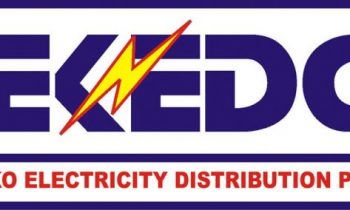 … increase in import largely driven by a shift towards renewable energy generation
… increase in import largely driven by a shift towards renewable energy generation
Olusola Bello
The total import value of solar components brought to Nigeria in the last three years is estimated at $518 million. Solar panels accounted for the highest portion of c.48.6% of this
Over $350 million of electronic components imported into Nigeria between 1 January 2018 and 31 August 2021 are expected to be utilised in the generation of solar power.
In the last three years, there has been an influx of solar power components into the Nigerian domestic market.
The high energy deficit in Nigeria has driven a rise in demand for renewable energy, which will lead to the generation of large volumes of electronic waste.
The increase in import of solar components has been largely driven by the shift towards renewable energy generation, which is enhanced by the efforts of the government and impact investors towards upscaling the reach of off-grid renewable energy.
According to a research conducted by All ON, a subsidiary of Shell in Nigeria, the total import value of solar components in the last three years is estimated at $518 million. Solar panels accounted for the highest portion of c.48.6% of the total import value.
For the purpose of this research which is title: “Market research on the circular economy of the renewable energy sector in Nigeria,” have defined e-waste as refuse generated by electronic devices including mobile phones, computers etc. at the end of their useful life.
Over $350 million of components imported between 1 January 2018 and 31 August 2021 are expected to be utilised in the generation of solar power.
Some of the imports include Lead acid and lithium-ion batteries, which were not intended solely for utilisation in renewable energy generation. While solar component imports were largely by wholesale dealers, a proportion of imports during the period were made directly by mini grid developers and corporate entities, for the delivery of specific commercial and private projects respectively, the report stated.
“Indicative analysis shows that approximately 47 – 52 million kilograms of solar panels were imported between 1 January 2018 and 31 August 2021”
Indicative analysis of import volumes Based on the cumulative import value between 1 January 2018 and 31 August 2021, we estimate that about 2,894,208 – 2,618,569 units of solar panels, weighing c.47 – 52 million kilograms were imported.
This estimate is based on an average price range per 300-watt panel of USD87 – USD96 and an average weight of c.18.1kg per panel.”
Lead acid batteries currently account for the largest portion of solar waste. By 2040, waste from solar panels will grow to account for c.14.6% of total waste volumes.
Estimated solar waste as at 2021 is largely composed of lead acid batteries, with an average life span of three to five years. The waste is expected from lead acid battery powered projects deployed in the year 2018 and earlier. The expected waste from lead acid batteries are subsequently expected to account for a lower proportion of total waste volume, as more projects are deployed using either lithium-ion batteries or a hybrid model, which is not powered by batteries. Regardless of the expected increase in the rate of adoption of other models, lead acid battery usage is still expected to grow, due to its affordability.
“Based on our estimations, we expect the proportion of lead acid battery waste to total solar e-waste to decline from 100% in 2021 to 82.3% in 2040. Lithium-ion batteries and inverters: Relative to lead acid batteries, lithium-ion batteries and inverters have a longer life span, with an average life of 7 – 10 years. We project wastes from lithium-ion batteries and inverters to start building up around 2025, for projects deployed by 2018 and earlier.
From our projections, waste from lithium-ion batteries and inverters are expected to jointly account for c.3.1% of total waste generated by 2040. Panels: Solar panels have an average life span of 20 – 25 years, as such substantial waste volumes from panels are expected to build up around 2040. Panels are projected to account for c.14.6% of total waste volumes by 2040.




